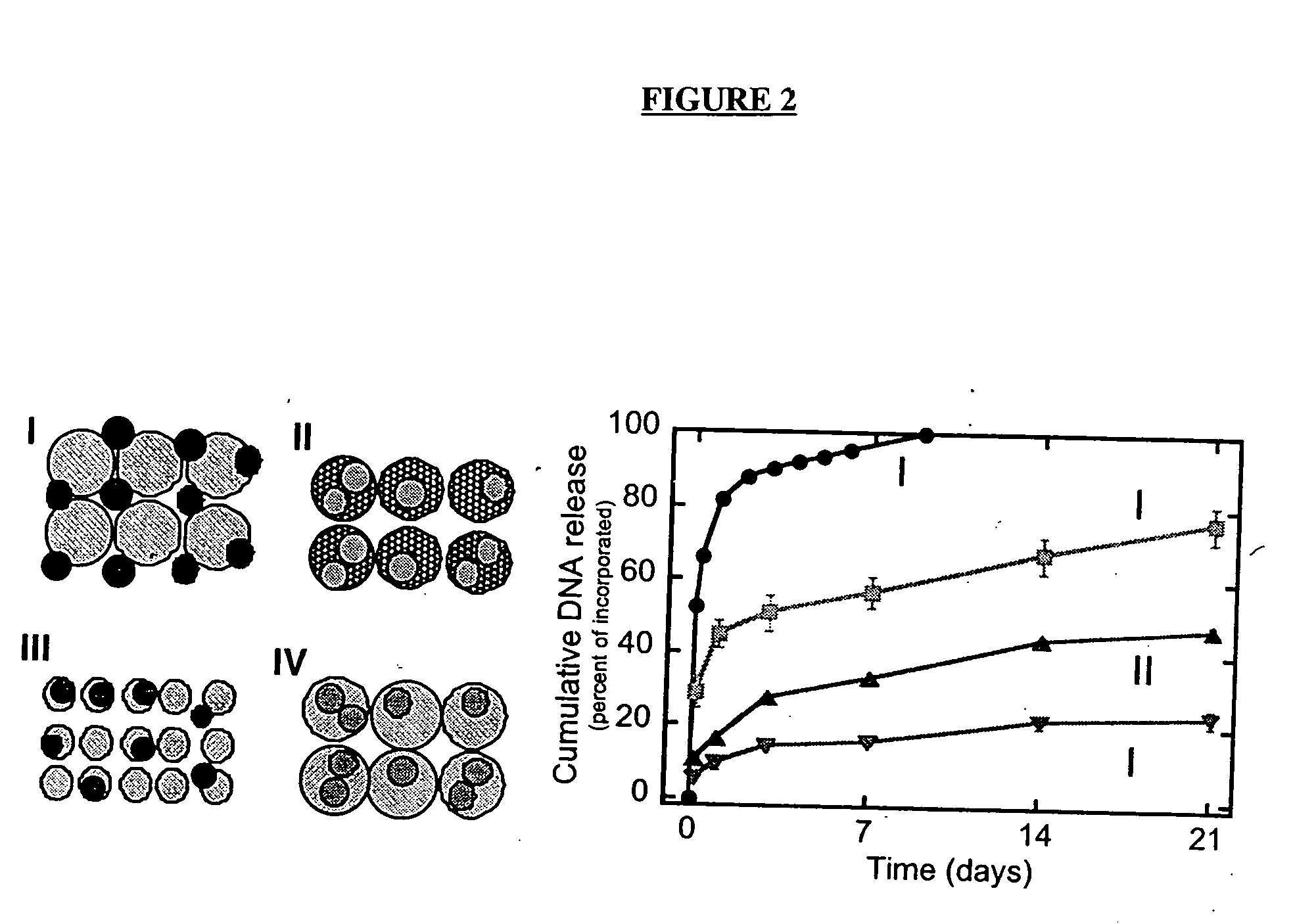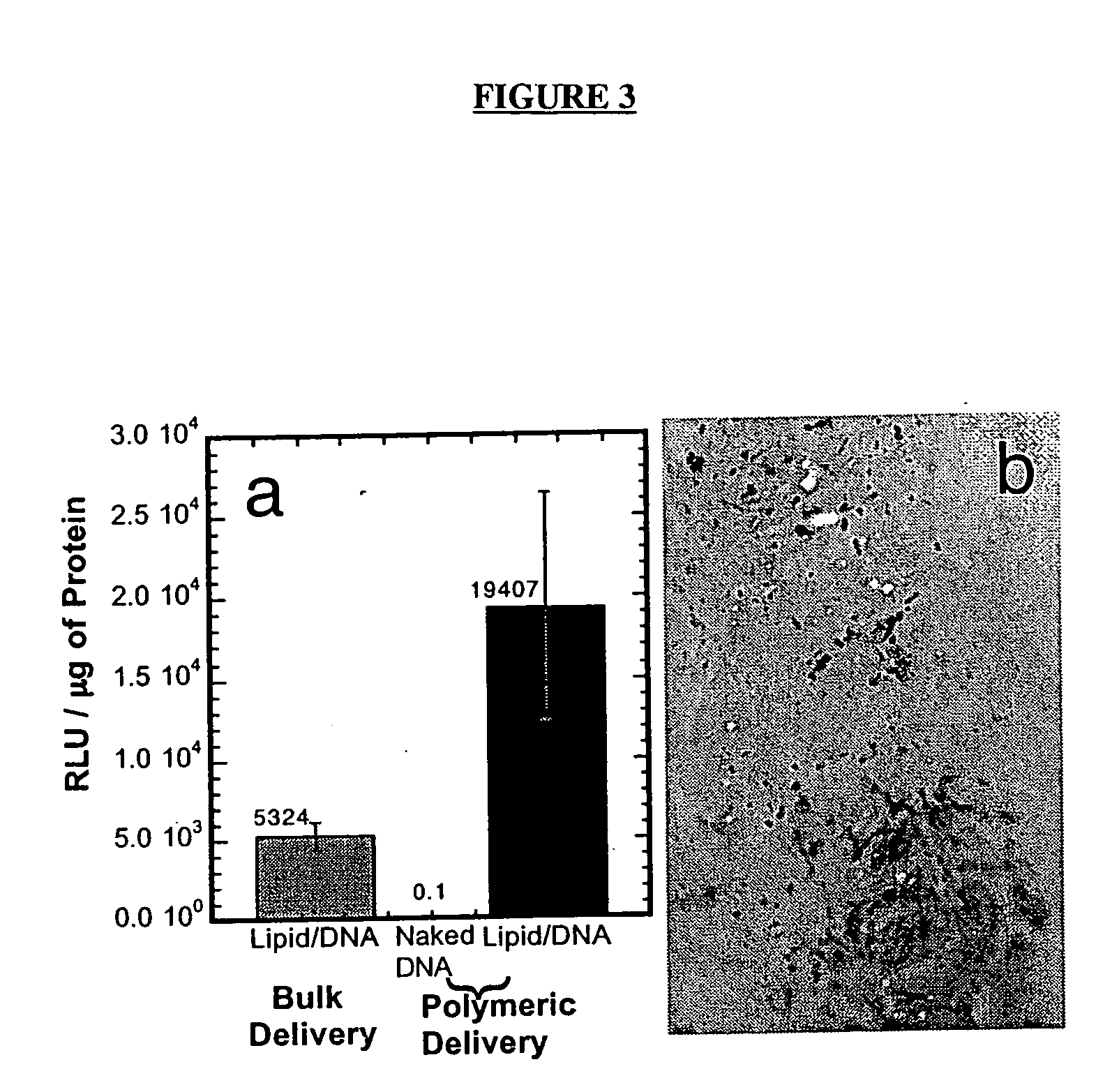Biodegradable scaffolds and uses thereof
- Summary
- Abstract
- Description
- Claims
- Application Information
AI Technical Summary
Benefits of technology
Problems solved by technology
Method used
Image
Examples
example 1
Fabrication of Cylindrical Scaffolds by the Gas Foaming Procedure
[0172] A gas foaming process has been employed to fabricate cylindrical scaffolds, with either a single (FIG. 1a) or multiple (FIG. 1b) lumens, by assembly and fusion of assembled microspheres. The copolymer of lactide and glycolide (PLG) are used for fabrication, which as been widely used in tissue engineering and neural regeneration, and is well known to the skilled artisan. Microspheres are loaded into a custom built mold (O.D.=3 mm) and fused using a gas foaming process as described in U.S. Pat. No. 6,281,256. Molds are equilibrated in high pressure CO2 (800 psi), and pressure quenching leads to the nucleation and growth of gas pores in the polymer, resulting in fusion of adjacent microspheres. PLG copolymers (50:50, 75:25, and 85:15) with a range of molecular weights (i.v.=0.2 to 1.4 dL / g) can be processed, allowing scaffolds to be fabricated that degrade over times ranging from weeks to months.
[0173] For applic...
example 2
Drug Incorporation and Release from Cylindrical Scaffolds
[0175] The gas foaming procedure allows for the incorporation of bioactive factors into polymers by two methods shown schematically in FIG. 2. In the first method (FIG. 2-I), lyophilized drug is mixed with polymer microspheres, compression molded, and foamed into a structure. Proteins and DNA can be lyophilized in the presence of stabilizers (e.g., sucrose, lactose 0.1 M), which retain their integrity and activity during the freezing and dehydration processes. Alternatively, the factors can be incorporated directly into the polymer microspheres using a double emulsion process, and then formed into the cylindrical structure (FIG. 2, II-IV).
[0176] The two techniques for incorporation can be used to differentially regulate the release kinetics of drug from the polymer scaffold (FIG. 2). Scaffolds with incorporated DNA were fabricated as shown in FIG. 2, immersed in PBS, and the concentration of DNA released into the surrounding...
example 3
Transfection with Release DNA Complexes Encoding for Reporter Genes
[0177] The ability of DNA complexes released from the polymer scaffolds to transfect cells in vitro was subsequently examined. The reporter genes luciferase and b-galactosidase were used to characterize transfection through measurements of the quantity of protein production (luciferase assay) and the number of cells transfected (light microscopy). The release of naked DNA from the polymer scaffolds resulted in low quantities of protein production (FIG. 3a). The release of lipid / DNA complexes, termed lipoplexes, resulted in expression by NIH / 3T3 cells at levels similar to bolus delivery of freshly prepared lipoplexes. Polymeric tubes releasing DNA lipoplexes (10 μg) transfected cells cultured within the lumen. NIH / 3T3 cells were seeded onto collagen matrices using a dynamic seeding procedure and cultured within the lumen. X-gal staining of the collagen showed transfected cells throughout the collagen (FIG. 3b).
PUM
| Property | Measurement | Unit |
|---|---|---|
| Diameter | aaaaa | aaaaa |
| Diameter | aaaaa | aaaaa |
| Diameter | aaaaa | aaaaa |
Abstract
Description
Claims
Application Information
 Login to View More
Login to View More - R&D
- Intellectual Property
- Life Sciences
- Materials
- Tech Scout
- Unparalleled Data Quality
- Higher Quality Content
- 60% Fewer Hallucinations
Browse by: Latest US Patents, China's latest patents, Technical Efficacy Thesaurus, Application Domain, Technology Topic, Popular Technical Reports.
© 2025 PatSnap. All rights reserved.Legal|Privacy policy|Modern Slavery Act Transparency Statement|Sitemap|About US| Contact US: help@patsnap.com



